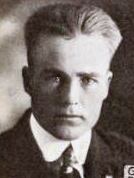
Paul Henreid was an Austrian-American actor, director, producer, and writer. He is best remembered for several film roles during the Second World War, including Capt. Karl Marsen in Night Train to Munich (1940), Victor Laszlo in Casablanca (1942) and Jerry Durrance in Now, Voyager (1942).

Stuart Erwin was an American actor of stage, film, and television.

George S. Barnes, A.S.C. was an American cinematographer active from the era of silent films to the early 1950s.

Franz Planer, A.S.C. was an Austrian-American cinematographer.
Heinz Roemheld was an American composer.

Margo was a Mexican actress and dancer. She appeared in many film, stage, and television productions, including Lost Horizon (1937), The Leopard Man (1943), Viva Zapata! (1952), and I'll Cry Tomorrow (1955). She married actor Eddie Albert in 1945 and was later known as Margo Albert.

Willard Mack was a Canadian-American actor, director, and playwright.

Frank Reicher was a German-born American actor, director and producer. He is best known for playing Captain Englehorn in the 1933 film King Kong.

Charles J. Winninger was an American stage and film actor, most often cast in comedies or musicals.

Marguerite Churchill was an American stage and film actress whose career lasted 30 years, from 1922 to 1952. She was John Wayne's first leading lady, in The Big Trail (1930).

Irving Pichel was an American actor and film director, who won acclaim both as an actor and director in his Hollywood career.

Alexander D'Arcy was an Egyptian stage, television and film actor with an international film repertoire.

Michael Simeon Visaroff was a Russian-born character actor, who worked in the United States on stage and screen.

Robert Edward Homans was an American actor who entered films in 1923 after a lengthy stage career.

Claud Allister was an English actor with an extensive film career in both Britain and Hollywood, where he appeared in more than 70 films between 1929 and 1955.

Martin Kosleck was a German film actor. Like many other German actors, he fled when the Nazis came to power. Inspired by his deep hatred of Adolf Hitler and the Nazis, Kosleck made a career in Hollywood playing villainous Nazis in films.

Sarah Ann Padden was an English-born American theatre and film character actress. She performed on stage in the early 20th century. Her best-known single-act performance was in The Clod, a stage production in which she played an uneducated woman who lived on a farm during the American Civil War.

Stolen Identity is a 1953 Austrian film directed by Gunther von Fritsch and starring Donald Buka, Joan Camden and Francis Lederer.

Bernadene Hayes was an American film and television actress. She also performed on radio and the stage, and as a singer.

George Hiram Robinson (1890-1958) was an American cinematographer from Los Angeles.




















